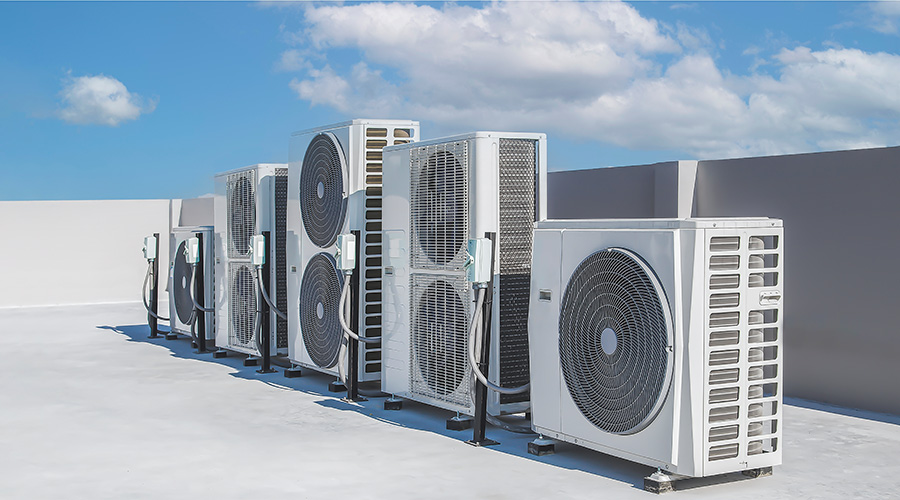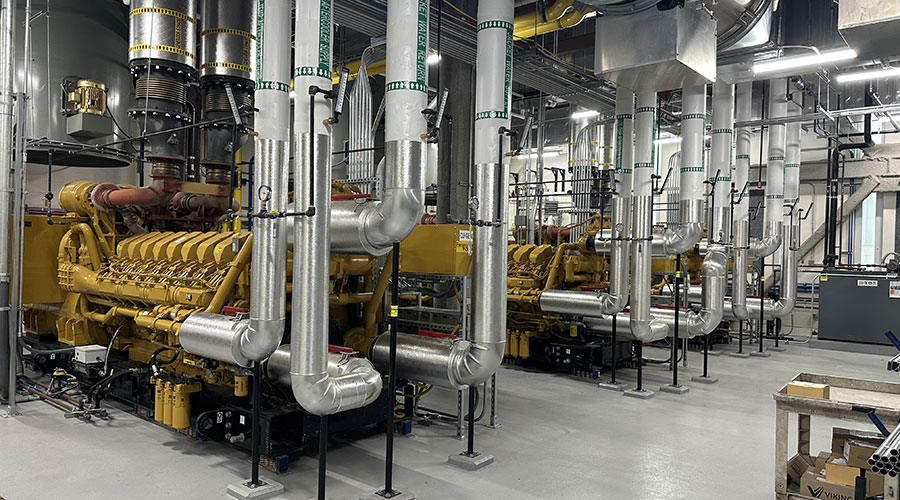Creating Energy Efficiency
Insights that help managers identify energy-wasting HVAC systems and develop strategies to address the problem
More organizations realize that saving energy has a huge impact on their bottom line, but assessing its impact can be difficult. Efforts to identify energy-guzzling systems in facilities often falter due to the focus on one system.
Maintenance and engineering departments can help their organizations minimize energy costs by being more proactive in monitoring the entire range of energy-using systems and developing a comprehensive approach to identifying energy waste.
The Numbers
The U.S. Department of Energy generates millions of statistics annually concerning energy use in buildings. Managers can use these statistics to benchmark their buildings — getting a better understanding as to how the energy-consuming aspect of any type of building compares to national averages.
Two leading resources include the Commercial Building Energy Consumption Surveys, generated every four years, and the 2003 Buildings Energy Databook, both available from the department's Web site. According to the 2003 Buildings Energy Databook, commercial and residential buildings account for 39 percent of total energy consumption in the United States.
Until recently, however, energy regulations for buildings received little attention. This sector faces challenges to energy efficiency from developers who focus on keeping costs low to get a building constructed and operational, as well as from owners who don’t have capital readily available for system upgrades and maintenance.
In addition, the construction process focuses on system installation, not system integration, so a building's maintenance staff too often is left to ensure systems operate as designed.
Identifying Challenges
Building operators are challenged each day to stay on top of the many energy-using systems in their buildings. Operations and maintenance manuals detail everything from the type of wrench to use for replacing sprinkler heads to the frequency for cleaning water-cooled chiller tubes.
Some operators inherit problems that can’t be fixed or are not clearly documented from previous operators. Sick-building syndrome isn’t just about air quality: Many institutional and commercial buildings are sick from a lack of proper system effectiveness and integration.
System effectiveness ensures systems operate as designed. System integration is the degree to which systems operate and communicate with each other. If both situations exist, routine maintenance is just that, with no problem solving required. But many systems don’t operate as designed, which leads to difficulty for the building-operations team.
The constant need for problem solving by building managers often pushes aside proper system and equipment maintenance. This situation creates a snowball effect in which systems and equipment degrade and cause more problems. A strict maintenance schedule that includes equipment cleaning is one of the best ways to maintain overall building efficiency.
Finding Energy Waste
Building systems are integrated, whether managers recognize it or not. For instance, lights produce heat, which in turn creates additional cooling needs. Operating lights efficiently makes the HVAC system more efficient.
Building operators have a range of options when it comes to identifying energy waste and improving energy efficiency for a variety of systems. For example, low delta T syndrome is a common problem among buildings that use chilled-water cooling. Chillers are designed to operate with a certain temperature difference — commonly 10-12 degrees — between water entering and leaving the chiller. Problems arise when this delta is not maintained.
The issue is system integration among the air handling units (AHU) or fan-coil units and chilled-water pumps. In a variable-flow, chilled-water distribution system, the pressure in the line drops when an AHU calls for more cooling and opens chilled-water valves. This causes the pumps to increase the flow of chilled water to maintain a differential pressure in the system. If a system is properly balanced between water flow and each AHU, no problem exists.
The obscurity lies in the original balance of the system versus current building demands. It is not cost-effective to place a flow meter at each chilled-water coil. Once a change that opens a balancing valve is made in the system, it is difficult for the system to respond appropriately. If a balancing valve at one chilled-water coil is opened or closed, it affects the balance of the entire system.
When the water flow to the chilled-water coils is too high for the installed coil, the delta T cannot be maintained. The result is that the chiller must operate at a lower delta T than designed, reducing its efficiency and effectiveness. Another result might be that multiple chillers operate to satisfy the chilled-water load when only one is required, based on actual tonnage.
This situation can be avoided by allowing agencies trained in testing, adjusting and balancing to make changes when necessary. Managers also can address the scenario by using the controls system to reprogram the interaction of system components.
Steps to Savings
Many buildings have ever-evolving tenant demands. Floor plans change shape and function, and building systems must adapt. Managers have a number of options.
One common oversight in this process is the flow of air throughout the spaces. If a build-out causes problems with space temperature or pressure, such as doors standing open, it might be due to a restricted air path.
Airflow always follows the path of least resistance. If a door opening is larger than an opening in a ceiling space that leads back to the air-handling unit, the air will go through the door opening.
Managers must take time to ensure that any new walls built to deck have adequate transfer openings for plenum return systems. For a ducted return, managers need to verify that adequate return-duct sizes and grilles exist. Be sure to use this method of problem solving before changing fan speeds. Once a fan speed is changed, technicians must make measurements to determine the new airflow to re-balance the system.
Managers also should consider variable-frequency drives (VFD), also known as variable-speed drives or adjustable-speed drives. These systems are becoming more common and less costly to implement. VFD can help save energy and are a good tool for producing an efficient system.
But managers must use caution when installing a VFD on an existing, constant-speed system. The VFD might make for a more efficient pump or fan, but it could cause problems with system integration. Managers will need to investigate other parameters that might need to be modified if a VFD is installed before making the change.
Data Trending and Benchmarking
Data is very important. Managers can use system-data trends in determining the way the system is operating versus the way it was designed to operate. Many controls systems are capable of producing trending data, so implementing data-trending techniques can be a low-cost step toward system effectiveness and integration.
Examples of data trends include:
-
entering and leaving chilled-water temperature versus time of day
-
equipment schedule — on/off — versus time of day
-
zone temperature versus time of day.
Data trends can be extremely helpful in troubleshooting problems, especially if they were compiled before the problem arose.
Trended data from a utility company also can help in benchmarking a building. Keeping good monthly records of utility data allows managers to see the way a building performs over time, and it aids in problem-solving if need be. Managers can obtain a record of utility bills from the utility company, but it often takes the utility time to access and send the data, and records are only available from the last few years.
Building Commissioning
The most effective way to identify waste and create an energy-efficient building is through commissioning. The American Society of Heating, Refrigerating and Air-Conditioning Engineers defines commissioning as the process of ensuring building systems are designed, installed, functionally tested and capable of being operated and maintained to perform in conformity with design intent.
The rise of commissioning has created a new industry of consulting services, where individuals highly skilled in systems integration and effectiveness conduct the commissioning process.
The commissioning process not only looks at the effectiveness of each system, but the integration of connected systems. Various degrees of commissioning exist, ranging from simple maintenance techniques to highly involved data collection and analysis. Commissioning helps building managers put systems and technology in place that result in an energy-efficient and cost-effective facility.
| |
Five Steps Toward Efficiency
- Educate yourself. Study HVAC systems' operations and maintenance manuals. Learn which system parameters technicians can adjust without much disturbance and which ones they can’t. The Internet is also an excellent resource for finding more information.
- Determine priorities for operating and maintaining the building. Formulate a plan to optimize building performance — with the aid of a consultant, if necessary — and then execute the plan. Always keep in mind that efficiency is directly related to dollars.
- Be patient. Most problems concerning system integration don’t appear overnight and aren’t resolved quickly. Rash decisions often create new problems.
- Find someone you trust. Form relationships with consultants who familiarize themselves with your facilities. This action will keep future costs down because they will have prior knowledge about systems when investigating new issues.
- Get a second opinion. This isn’t just good medical advice. Some consultants understand system integration, but some don’t. Take time to investigate several consultants with small assignments, and give the more difficult assignments to the one that performs best, based on your criteria.
|
Related Topics:











